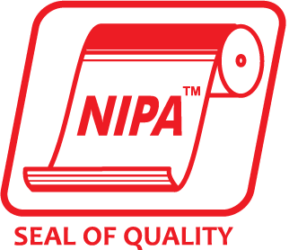
₹ 124800
₹95- ₹104
1200
₹90
-13

29 May 2025
2 Jun 2025
3 Jun 2025
Application Details
Nikita Papers IPO is a bookbuilding of ₹67.54 crores. The issue is entirely a fresh issue of 64.94 lakh shares.
Nikita Papers IPO bidding opened for subscription on May 27, 2025 and will close on May 29, 2025. The allotment for the Nikita Papers IPO is expected to be finalized on Friday, May 30, 2025. Nikita Papers IPO will be list on NSE SME with a tentative listing date fixed as Tuesday, June 3, 2025.
Nikita Papers IPO price band is set at ₹95 to ₹104 per share. The minimum lot size for an application is 1200. The minimum amount of investment required by retail investors is ₹1,14,000. But it is suggested to the investor to bid at the cutoff price to avoid the oversubscription senerio, which is about to ₹1,24,800. The minimum lot size investment for HNI is 2 lots (2,400 shares) amounting to ₹2,49,600.
About Nikita Papers Limited (SME IPO)
Incorporated in 1989, Nikita Papers Limited is engaged in the manufacturing of paper and paper products, catering to a wide range of industrial, commercial, and printing needs. The company specializes in producing various grades of paper and is known for its emphasis on environmentally sustainable production processes, often utilizing recycled materials. With a robust distribution network, Nikita Papers serves both domestic and international markets, focusing on delivering consistent quality and performance.
The company may also operate in related verticals such as packaging, tissue paper, and specialty paper products, depending on the scale of its operations. One of its key offerings is Kraft Paper, available in the 70–200 GSM range. This durable and breathable packaging solution is ideal for wrapping, making bags, cushioning materials, and supporting a variety of eco-friendly and creative uses.
FAQ
IPO stands for "Initial Public Offering." It's the process through which a privately-held company becomes publicly traded by offering its shares to the general public and listing them on a stock exchange for trading. This allows the company to raise capital from investors and grants individuals and institutions the opportunity to invest in and own a portion of the company.
The life cycle of an IPO, or Initial Public Offering, begins with a company's decision to go public. It involves hiring underwriters, registering with regulatory authorities, determining the IPO price, marketing to investors, and the subscription period where investors place orders for shares. After allocation and listing, shares become publicly tradable, and the company enters the secondary market. Ongoing reporting and corporate governance are crucial as the company continues to operate as a publicly-traded entity. The IPO aims to raise capital for growth and provides investors with opportunities to trade shares in the company.
An IPO (Initial Public Offering) is when a private company goes public by selling shares to the public. Investors buy these shares, giving them ownership in the company. It's a way for companies to raise capital and expand. The process involves underwriters, regulatory filings, setting the IPO price, and marketing to investors. After the IPO, shares can be traded on a stock exchange. IPOs offer opportunities and risks, so investors should research and consider carefully.
"Upcoming IPOs" refers to initial public offerings that have been announced by private companies but have not yet occurred. These are companies that plan to go public in the near future by issuing shares to the public and listing them on a stock exchange. Investors often keep an eye on upcoming IPOs as they represent opportunities to invest in companies at their early stages of public trading, potentially capturing growth potential. These offerings are typically accompanied by significant media and investor attention as they approach their launch dates.
 Download
Download